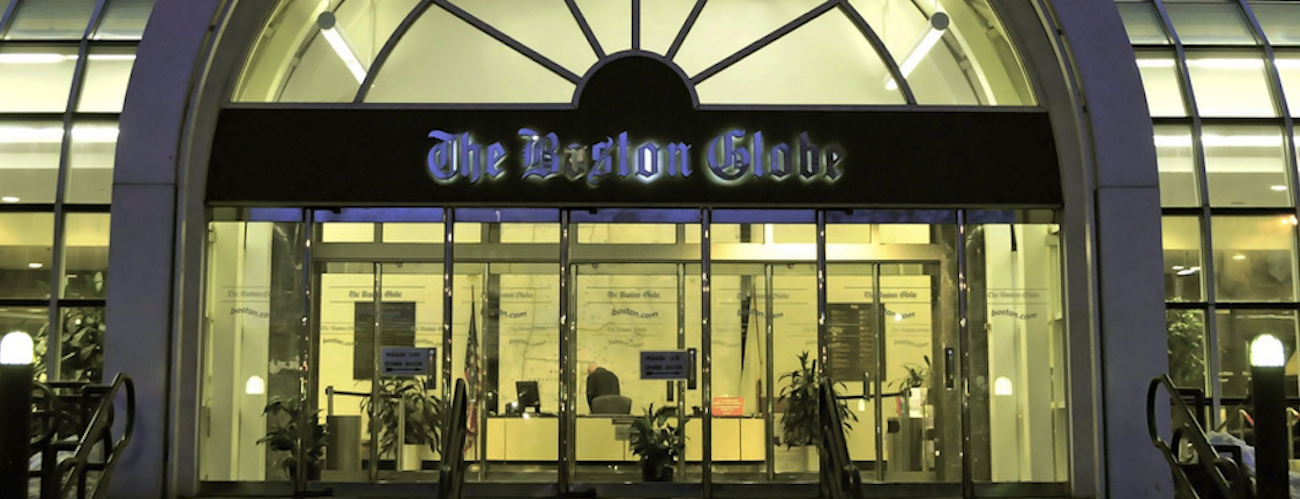Talk is cheap in an industry where plans to build “next generation media companies” through the “ambitious restructuring” of newspapers lend a Pollyannish glow to draconian measures. At The Boston Globe, however, Editor Brian McGrory is refreshingly frank. “Let’s accept upfront that this will be a disruptive stretch, pretty much starting right now, despite all good efforts to prevent it,” he wrote in a staff memo published Monday. “I don’t know any way around it.”
The note heralded the conclusion of an in-house working group charting out a blueprint for digital sustainability—similar to The New York Times’ much-discussed 2020 report released in January. The most crucial point came in the first paragraph, where McGrory laid out his newsroom’s strategic goal in no uncertain terms: “to unabashedly pursue digital subscriptions even while honoring the many loyal readers who subscribe to the physical newspaper.” The privately owned Globe isn’t paying lip service to the notion, still prevalent at some major newspaper companies, that digital-audience scale might yield a scaleable digital business.
Beginning in the next few months, the newsroom reorganization outlined by McGrory will cap off a long period of ambitious digital experimentation with mixed results. The reasons that make the Globe an interesting laboratory to reinvent the metro newspaper, however, also make its efforts hard to replicate: a well-heeled and civic-minded owner; local institutions with national and international reach; and an unusually high concentration of college graduates in its immediate coverage area.
McGrory’s 3,000-word memo is available here. Some major takeaways below:
Can it scale?
The digital subscription business, that is. Media analyst Ken Doctor reported in March that the Globe had surpassed 80,000 such paying customers, the highest total of any regional daily in the country. That success illustrates both strategic clarity—as seen in past statements from company brass—and how private ownership has allowed the Globe to maintain newsroom value by paring down staff more judiciously than many counterparts.
Digital subscriptions surged in the first several weeks of 2017, but whether that revenue is growing fast enough to offset print declines remains an open question. McGrory outlined a revamped digital team drawing from the product, development, and design departments to focus on attracting and retaining digital subscribers.
The company has also responded by trying to broaden its potential customer base from those ostensibly interested in a general-interest Boston report. Stat News, a standalone life sciences site owned by Boston Globe Media, began offering a premium subscription service in December. “In a perfect world,” McGrory added in his memo, “we will sell sports-only digital subscriptions soon outside of New England.” Such moves are intended to capitalize on Massachusetts’ outsized influence in topics such as medical research and professional athletics.
Escaping the mushy middle
The emerging consensus among digital publishers like Quartz is to limit mid-length articles, particularly those in the 500- to 800-word range (like this one). That task is obviously more difficult for newspapers that long structured story formats for a daily print product. McGrory has harped on the need to move away from commodity news in the past, adding Monday, “we are going to do whatever we can to put the 600-word incremental story out of its sad little end-state misery.”
He offered up a dual-pronged plan for doing so. On the one hand is an “Express Desk” producing “in-the-moment important, quirky and just plain fascinating stories that metrics show our readership craves.” Along with a greater urgency to publish at all hours—the newsroom’s workday will shift earlier—McGrory called for work that’s “more crusading…more humorous, god dammit, and absolutely more humane.” In other words, journalism that’s better suited for digital media.
The other pillar is the enterprise reporting for which the Globe is already known. Along with maintaining the paper’s Spotlight team “at or near its current staffing level,” McGrory wrote, the newsroom will “create a new strike force of reporters focused on shorter term accountability stories, and encourage reporters room-wide to join the team on a per-project basis.”
Constant motion
The big structural change looming at the Globe is the combination of much of the metro, business, and lifestyle desks into what McGrory calls a “super department.” The goal is for more coordination and collaboration. And under a revamped beat structure, some assignments “are meant to last but a few months, others longer, but all will need to be constantly reassessed.”
The call for such flexibility in response to shifting digital needs comprised the thru line of McGory’s note. “Too many people remain too long in too many positions,” he wrote near its conclusion. “So let’s establish that we have no tenured jobs in the Globe newsroom….Continuity and experience matter. But we’ll strive to stir things up in our push to refresh the whole enterprise.”
David Uberti is a writer in New York. He was previously a media reporter for Gizmodo Media Group and a staff writer for CJR. Follow him on Twitter @DavidUberti.

